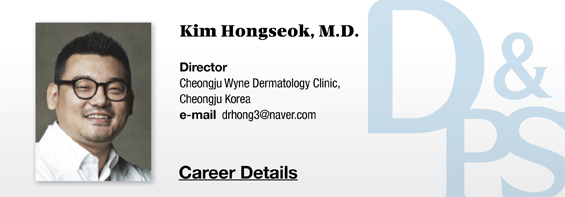
Vitamin C is also known as ascorbic acid, which comes from the word 'ascorbus,' meaning “no scurvy.” Traditionally, sailors ate lemons and other vitamin c rich foods to avoid scurvy during their long journey. L-ascorbic acid is a chemically synthesized form of vitamin C which is found in the form close to D-ascorbic acid in nature. The two types are interchangeable[i]. However, only L-ascorbic acid is the activated form that can be medically used. Gastrointestinal absorption of vitamin C is very limited despite oral intake of a high dose. Many cosmetic products contain Vitamin C, however their stability and usefulness are questionable. Manufacturers like Skinceuticals or La Roche Posay have introduced stabilized vitamin C products and use packaging that prevent inactivation of vitamin C. Packaging of such products should block UV and limit air exposure to prevent oxidation of vitamin C.
Vitamin C has toxicity toward melanocytes and disturbs an important step within melanogenesis. It inhibits tyrosinase and melanogenesis by interacting with copper ion in tyrosinase-active site as well as acts on perifollicular pigments[ii]. However, vitamin C is unstable and is often used in combination with other whitening agents such as soy or liquorice[iii]. Vitamin C affects pro-inflammatory cytokines (TNF-α·IL-1·IL-6·IL-8) by inhibiting NFκB and has anti-inflammatory action in acne and rosacea. It also promotes wound healing and prevents PIH.
Vitamin C is available in various cosmetic products such as cream, serum, and patches. Among these, only the serum form has activated vitamin C and most products do not have photostability. Vitamin C oxidizes into Dehydroascorbic acid (DHAA), changing color from clear to yellow. Vitamin C remains active in pH 3.5 or lower. At such pH levels, the molecular ionic charge disappears, allowing easier penetration of the stratum corneum[iv]. Cosmetic products that contain activated vitamin C are likely to cause skin irritation in sensitive skin, even leading to necrosis when used for long-term. Most marketed products do not cause such reactions. From personal experience using various products, skinceuticals CE Ferulic causes necrosis when used long-term due to frequent air exposure in packaging. Correcting this shortcoming would make it a very effective product. In clinical practice, vitamin C can be used up to the serum concentration of 20% and the half-life in skin is 4 days at the maximal concentration. As UV exposure lowers the vitamin C content in the skin tissues, it is advisable to apply vitamin C after UV exposure.
There are many Vitamin C creams in the market but the cream form cannot deliver vitamin C to the dermis. The vitamin C contained in some products does not change into the physiologically active form in the skin. VC-PMG (magnesium-l-ascorbyl-2-phosphate) is a stabilized form of ascorbic acid and is easily absorbed into the skin due to its fat-solubility. It hydrates the skin and lowers the TEWL. One study found that topical application of VC-PMG in senile lentigines and melasma drastically cleared the skin in 19 out of 34 patients.
[Advertisement] MAGNUM(Q-switched Nd:YAG Laser) – Manufacturer: (www.i-dana.com)]
Other stable vitamin C extracts are as follows.
1. Ascorbyl 6 palmitate[v]
- Fat-soluble free radical scavenger, hydrolyzed into viatmin C, palmitic acid.
2. Disodium isostearyl 2-0 L-ascorbyl phosphate (VCP-IS-Na)
- stabilized ascorbyl moiety attached to VitaminC8 alkyl chain to increase epidermal permeability.
3. Ascorbic acid sulfate
4. Tetraisopalmitoyl ascorbic acid
- fat-soluble provitamin, sodium ascorbate that is still being studied.
References
[i] Wikepedia: [Home Page] Vitamin C: History. [Last Accessed on Aug 11]. Discovery and Sources in Available from: http://en.wikipedia.org/wiki/Vitamin_C
[ii] Matsuda S, Shibayama H, Hisama M, et al. Inhibitory effects of novel ascorbic derivative VCP-IS-2Na on melanogenesis. Chem Pharm Bull. 2008;56:292–7.
[iii] Draelos ZD. Skin lightening preparations and the hydroquinone controversy. Dermatol Ther. 2007;20:308–13
[iv] Pinnell SR, Yang HS, Omar M, Riviere NM, DeBuys HV, Walker LC. Topical L ascorbic acid percutanous absorbtion studies. Dermatol Surg. 2001;27:137–42.
[v] Inui S, Itami S. Perifollicular pigment is the first target for Ascorbyl2 phosphate6palmitate. J Dermatol. 2007;34:221–3
-To be continued




















